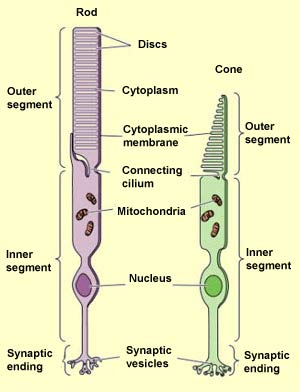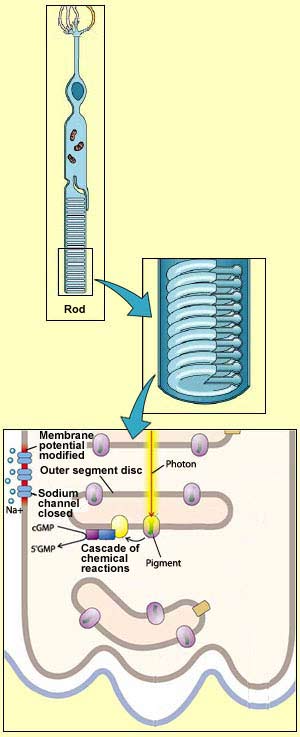Light enters the visual system through the eye
and strikes the retina at
the back of it. The retina is composed of specialized
cells, the rods
and cones, which convert light energy into
neural activity.
This conversion is made possible by light-sensitive
pigments located on the discs
in the outer segments of the rods and cones.When
light strikes these pigments, they change form, causing
a cascade
of chemical reactions in these photoreceptors.
These reactions make the photoreceptors' membranes
less permeable to certain ions, such as sodium. This
change in permeability alters each photoreceptor's
membrane potential and allows it to send a nerve
signal to cells in the next layer of the retina. |






